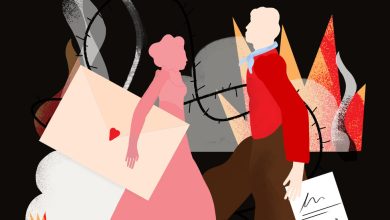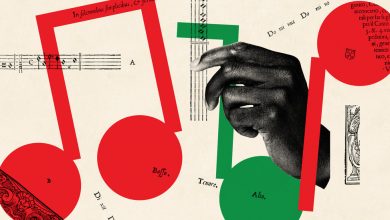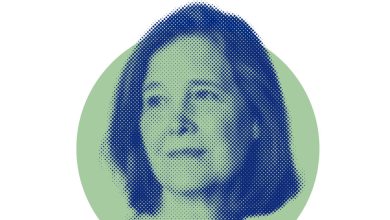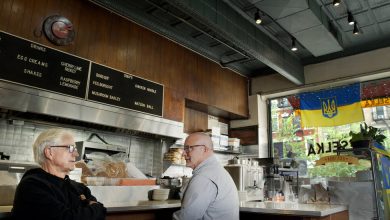Read Your Way Through Edinburgh


Credit…Raphaelle Macaron
There are two inevitable reactions when you tell people you live in Edinburgh. The first is an exclamation — Oh, I love Edinburgh! — that tends to be followed by a wistful sigh and a disquisition about skylines or craggy hills. The second is a question that is always accompanied by a shiver: Isn’t it cold?
To which my answer is, well, yes, for at least a third of the year, but the blackened silhouettes of the crenelated medieval buildings and the rearing inclines of the volcanic topography are best seen when etched against a pearl-grey winter sky, covered in a scree of sleet and ice and … wait, come back.
The city that’s been my home for 12 years has always been defined by its dualities and contrasts. The elegant Georgian symmetry of the New Town’s squares are divided from the twisting, dark alleyways of the medieval Old Town by the deep-cut gully of Princes Street Gardens. There’s an 11-month stretch of the year when Edinburgh is a relatively sedate, quiet city, and then there’s the roller-coaster ride of August when the whole place becomes an all-hours, hedonistic frenzy of Fringe shows, mime acts, jugglers and street food. Some residents cower indoors until it’s all over; others cash in and ship out, renting their places to festival goers. I like to see as many surreal and inventive shows as I can.
What should I read before I pack my bags?
If you are going to read one book before you visit Edinburgh, let it be the unparalleled “The Prime of Miss Jean Brodie,” by Muriel Spark. A short but potent novel about a school mistress who exerts a powerful influence over a select group of favored pupils (the “crème de la crème”), it is about adolescence, politics, the shifting sands of loyalty, the curse of hindsight — and Edinburgh. The city is ever-present, as backdrop and foil, as Miss Brodie walks her charges across the Meadows or takes them to tea in Cramond, talking, always talking. If anyone would like to school themselves in a certain brand of posh Edinburgh accent, watch the film adaptation, starring a young Maggie Smith. And then practice saying “girls” with her precise, clipped intonation.
What book would give me an insight into the hidden history of the city?
“Recovering Scotland’s Slavery Past: The Caribbean Connection,” by T.M. Devine, offers an insightful and well-researched slant on Scotland’s ties with slavery and the slave trade. Devine doesn’t let anyone off the hook; the book can also be used as an alternative guide to the true history of certain city buildings, landmarks and statues.
If I have no time for day trips, what books could take me farther afield instead?
Reflecting the architecture of its Old Town, Edinburgh is linked with a great deal of Gothic fiction. Robert Louis Stevenson’s “Kidnapped” takes place in a gratifyingly crumbling and gloomy castle to the north of the city, where a young lad must tussle for his inheritance — and, ultimately, his very life — with an evil old uncle. Or there is James Hogg’s strange, unsettling “The Private Memoirs and Confessions of a Justified Sinner,” in which the narrator is pursued around the city and the countryside by a terrifying avatar named Gil-Martin.
What books can show me other facets of the city?
Irvine Welsh’s “Trainspotting,” while not for the fainthearted, will reveal a side of Edinburgh not often seen by tourists. Published in the early 1990s, it arrived on the literary scene like a fireball, introducing us to an unforgettable group of antiheroes and their rises and falls in and around Leith. A series of interconnected short narratives about a group of friends, “Trainspotting” is inventive, scurrilous, gloriously demotic and entirely itself.
Tell me what audiobook would make for good company while I walk around.
The protagonist of one my all-time favorite books, “The New Confessions,” by William Boyd, begins life in Edinburgh, on the High Street. Although the course of the novel takes the reader all over the world — including to the Western Front, Berlin and Hollywood — John James Todd has the city running in his veins. The early scenes of his childhood in the turn-of-the-century Old Town are so evocative of a certain slice of Edinburgh’s history, and Boyd’s prose is a joy to read.
What would be a good book if the weather is gray and I need to stay in and read?
There may well be the odd day when the weather is wet and “dreich.” You could curl up with the excellent, page-turning thriller “Knots and Crosses,” by Ian Rankin, which is the first of his books about Rebus, a detective who works to rid Edinburgh of murderers and ne’er-do-wells. The good news is that, if you like it, there are many more in the series. Another resident of the city, Kate Atkinson, wrote the brilliant and twisty “One Good Turn”; her detective is Jackson Brodie and he is trying to solve a murder during the Fringe.
What literary pilgrimage destinations would you recommend?
Sir Walter Scott has his own fantastically ornate monument on Princes Street: It looks like a mini cathedral. You can climb it, for a small fee, and look out over the vista of shops and gardens. Nearby, Waverley Station is named after his novels; you’d be hard pressed to find a more bibliophilic transport terminus. The High Street has numerous literary walking tours, including an Ian Rankin/Rebus one. The Scottish Poetry Library, off Canongate, has a wonderful collection and archive, as well as a very good cafe. And you can gaze upon Robert Burns’s writing desk and Stevenson’s riding boots at the Writers’ Museum.
Where can I buy books if I run out?
Bibliophiles will never be caught short in Edinburgh. There are large branches of Waterstones and Blackwell’s, with wide selections of genres. The award for most beautiful bookshop must go to Topping & Company: It’s housed in an old William Playfair building and is a delightful warren of shelves and ladders, staffed by some seriously well-read booksellers. Golden Hare Books in Stockbridge is on possibly the city’s prettiest street, with an exquisitely chosen selection of books. It also has a wood-burning fireplace, so it’s a perfect place to sit and warm up with a book in your lap. The Edinburgh Bookshop is a must, occupying a corner of the bohemian Bruntsfield neighborhood; they are good at matching the right book to the right reader, and have a particularly great children’s section.
What’s the best time to visit Edinburgh if you are a book lover?
August, undoubtedly, when the incomparable Edinburgh International Book Festival takes over the College of Art for a couple weeks, running a fascinating and diverse program with hundreds of events and talks all day long. Miss it at your peril.
And what’s the best light read for the city?
David Nicholls’s “One Day” needs a special mention for its perfect encapsulation of Edinburgh’s university experience. The novel takes place mostly in London but its two main characters meet as students here and almost — but not quite — fall for each other. Therein lies the tale.
Any book-focused destinations nearby I should plan to visit with the children?
Is there a child anywhere who hasn’t heard of Harry Potter? Edinburgh is intrinsically linked with the boy wizard: J.K. Rowling lives and writes here. You can visit The Elephant House, the cafe where she worked on her manuscripts (though it is currently closed until further notice because of a fire, which locals speculate was started by He-Who-Shall-Not-Be-Named) and you can walk about the nearby Greyfriars Kirkyard and spot the gravestones that gave her inspiration for names: McGonagall, Scrymgeour, Moodie, Tom Riddell, Cruikshanks and even a family of Potters are all buried here. And if you walk down the vertiginous, multilevel Victoria Street toward the Grassmarket, you might well get a few Diagon Alley flashbacks …
Maggie O’Farrell’s Edinburgh Reading List
-
“The Prime of Miss Jean Brodie,” Muriel Spark
-
“Recovering Scotland’s Slavery Past: The Caribbean Connection,” T.M. Devine
-
“Kidnapped,” Robert Louis Stevenson
-
“The Private Memoirs and Confessions of a Justified Sinner,” James Hogg
-
“Trainspotting,” Irvine Welsh
-
“The New Confessions,” William Boyd
-
“Knots and Crosses,” Ian Rankin
-
“One Good Turn,” Kate Atkinson
-
“One Day,” David Nicholls
Maggie O’Farrell, born in Northern Ireland, has made Edinburgh her home for over a decade. Her novels include “Hamnet,” winner of the National Book Critics Circle Award, and, most recently, “The Marriage Portrait.” She has also written a memoir, “I Am, I Am, I Am: Seventeen Brushes With Death.”





